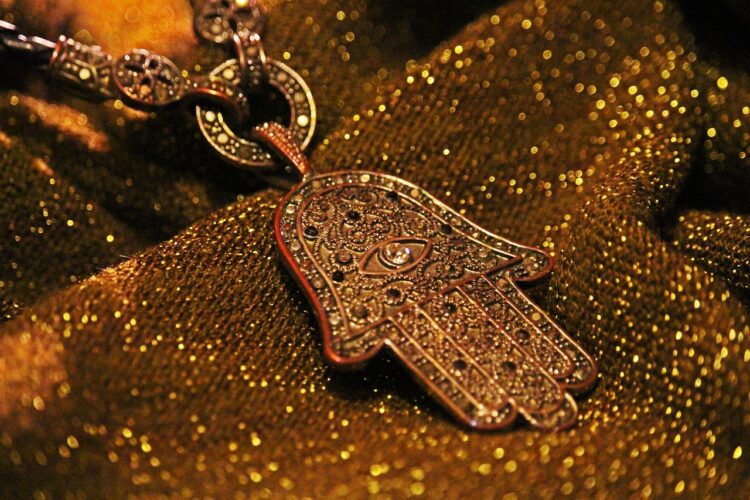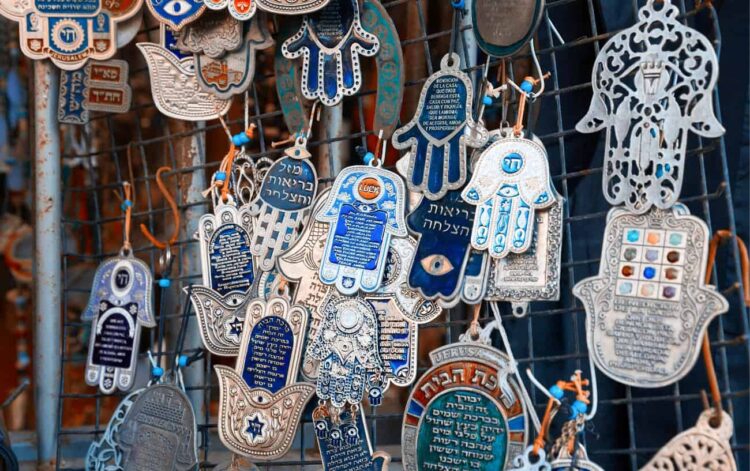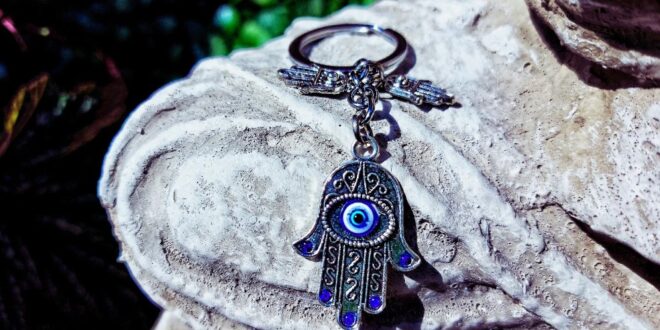Attention all seekers of knowledge and good luck! Are you ready to have your minds blown by some truly fascinating facts about the Hamsa hand? This iconic symbol, found in various cultures and religions, is believed to bring good fortune and protect against evil. And let me tell you, there’s a whole lot more to it than just being a cute trinket to hang on your wall.
So sit back, grab a cup of tea (or whatever your beverage of choice may be), and get ready to have your mind enlightened by some truly interesting tidbits about the Hamsa hand.
1. The Hamsa hand has ancient roots in Middle Eastern and Mediterranean cultures

The Hamsa hand is an ancient symbol that has roots in Middle Eastern and Mediterranean cultures. Its origins can be traced back to ancient civilizations such as the Phoenicians and the ancient Egyptians. In these cultures, the Hamsa hand was often associated with goddesses and was believed to bring good luck and protection.
The Hamsa hand has also been adopted by various religions, including Judaism, Islam, and Hinduism. In Judaism, the Hamsa hand is known as the Hand of Miriam and is often depicted with the Hebrew letter “shin,” which represents the name of God.
In Islam, the Hamsa hand is known as the Hand of Fatima and is associated with the daughter of the prophet Muhammad. In Hinduism, the Hamsa hand is revered as a symbol of the divine and is often associated with the god Vishnu.
Despite its ancient origins, the Hamsa hand remains a popular symbol today and can be found in many different forms, including as a decorative item on jewelry, home decor, and other items.
2. The Hamsa hand is revered as a symbol of protection and good luck in various religions, including Judaism, Islam, and Hinduism

The Hamsa hand is widely revered as a symbol of protection and good luck. It is believed to bring blessings and positive energy to those who possess it, and to protect against negative energies and forces. The Hamsa hand is often depicted with an eye in the center, which is thought to symbolize the all-seeing nature of God. This eye is meant to protect against the “evil eye,” which is believed to be a negative force that can cause harm or bring bad luck.
In addition to its associations with protection and good fortune, the Hamsa hand is also seen as a symbol of spiritual guidance and enlightenment. It is believed to help its owner connect with their inner wisdom and find direction in life.
The Hamsa hand has a number of different meanings and symbols associated with it, depending on the culture and context in which it is used. In some cases, it is seen as a symbol of femininity and fertility, while in others it is associated with strength and power. Overall, the Hamsa hand is revered as a symbol of positivity, prosperity, and spiritual growth.
The Hamsa hand is an important cultural symbol that is revered and used in a variety of different cultures and religions. In Judaism, the Hamsa hand is known as the Hand of Miriam and is considered a powerful symbol of protection and good luck. It is often displayed in homes and synagogues as a way to ward off negative energies and bring blessings to those who live or pray there.
In Islam, the Hamsa hand is known as the Hand of Fatima and is associated with the daughter of the prophet Muhammad. It is considered a symbol of divine protection and is often worn as a pendant or displayed in homes and mosques.
In Hinduism, the Hamsa hand is revered as a symbol of the divine and is often associated with the god Vishnu. It is believed to bring blessings and good fortune to those who possess it.
The Hamsa hand is also found in various other cultures and religions, including Buddhism, Christianity, and the Baha’i faith. In all of these cultures, the Hamsa hand is seen as a symbol of protection, good luck, and spiritual guidance.
3. The Hamsa hand is often depicted with an eye in the center, symbolizing the all-seeing nature of God

The Hamsa hand is often depicted with an eye in the center, which is thought to symbolize the all-seeing nature of God. This eye is sometimes referred to as the “Eye of Providence,” and is meant to represent the watchful and protective nature of God.
The inclusion of the eye in the center of the Hamsa hand is thought to be a way to ward off the “evil eye,” which is believed to be a negative force that can cause harm or bring bad luck. In some cultures, the evil eye is thought to be caused by envy or jealousy and is thought to be able to bring harm to those who are the recipients of these negative feelings. By including the eye in the center of the Hamsa hand, it is believed that the symbol can deflect and protect against the negative energies of the evil eye.
In addition to its protective powers, the eye in the center of the Hamsa hand is also thought to represent the all-seeing and all-knowing nature of God. It is a reminder that God is always present and aware of what is happening, and is able to provide guidance and protection to those who turn to him.
In conclusion, the Hamsa hand is an iconic symbol that has a rich history and cultural significance. Its roots can be traced back to ancient Middle Eastern and Mediterranean cultures, where it was revered as a symbol of protection and good luck. Today, the Hamsa hand is still used and revered in various cultures and religions, including Judaism, Islam, and Hinduism. Its enduring popularity as a decorative item, on jewelry, home decor, and other items, is a testament to its enduring cultural significance. Whether you are looking for protection, good fortune, or spiritual guidance, the Hamsa hand is a powerful symbol that is sure to bring blessings and positive energy into your life.
 Hi Boox Popular Magazine 2024
Hi Boox Popular Magazine 2024



